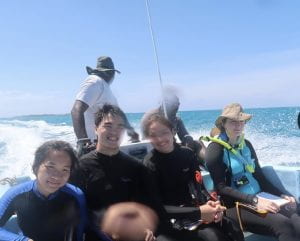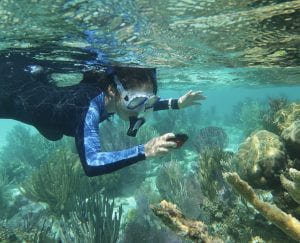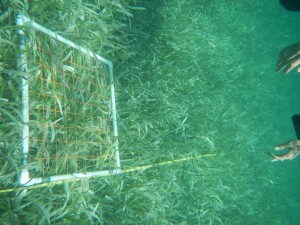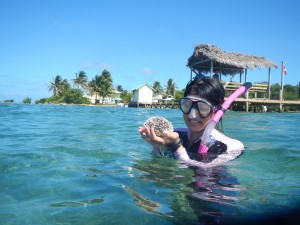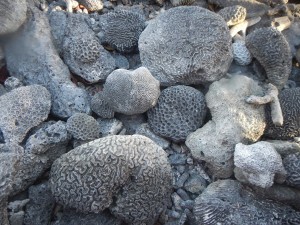This morning we completed (you guessed it) more transects! Again, we went out to two patch reefs, one in an MPA, one not. The first patch reef (within an MPA, nicknamed ‘the Aquarium’) contained lots of fire coral hidden in the coral we were attempting to survey. Weaving the transect tape and manipulating the quadrad was especially hard with the stinging fire coral around, especially since the water was so shallow—there was a limited amount of space above the reef through which we could float. At one point, I was floating directly on top of fire coral—a precarious situation. At (what was intended to be) the second site, there were moon jellies floating around, so we decided not to complete our transects there and opted to move to a different non-MPA site for our final transects. The final area that we decided on to be our non-MPA site was full of lionfish (yum! that’s my taxon!) and squid! After completing my transects, I watched Herby spear a lionfish that was hiding deep within the coral. I am excited to eat these lionfish at a later time.
In the afternoon, the class took the boat out to the fore reef, where we saw the reef drop off, sponges, and bigger animals in general, however, many of us (myself included) fell ill and could not properly appreciate the majesty of the reef in our conditions.
Seasickness
We ended the night with lectures on Anthozoa (non-reef building zoanthids, corallimorphs, and anemones), marine mollusks, and threats to coral reefs (of which there are a lot).

